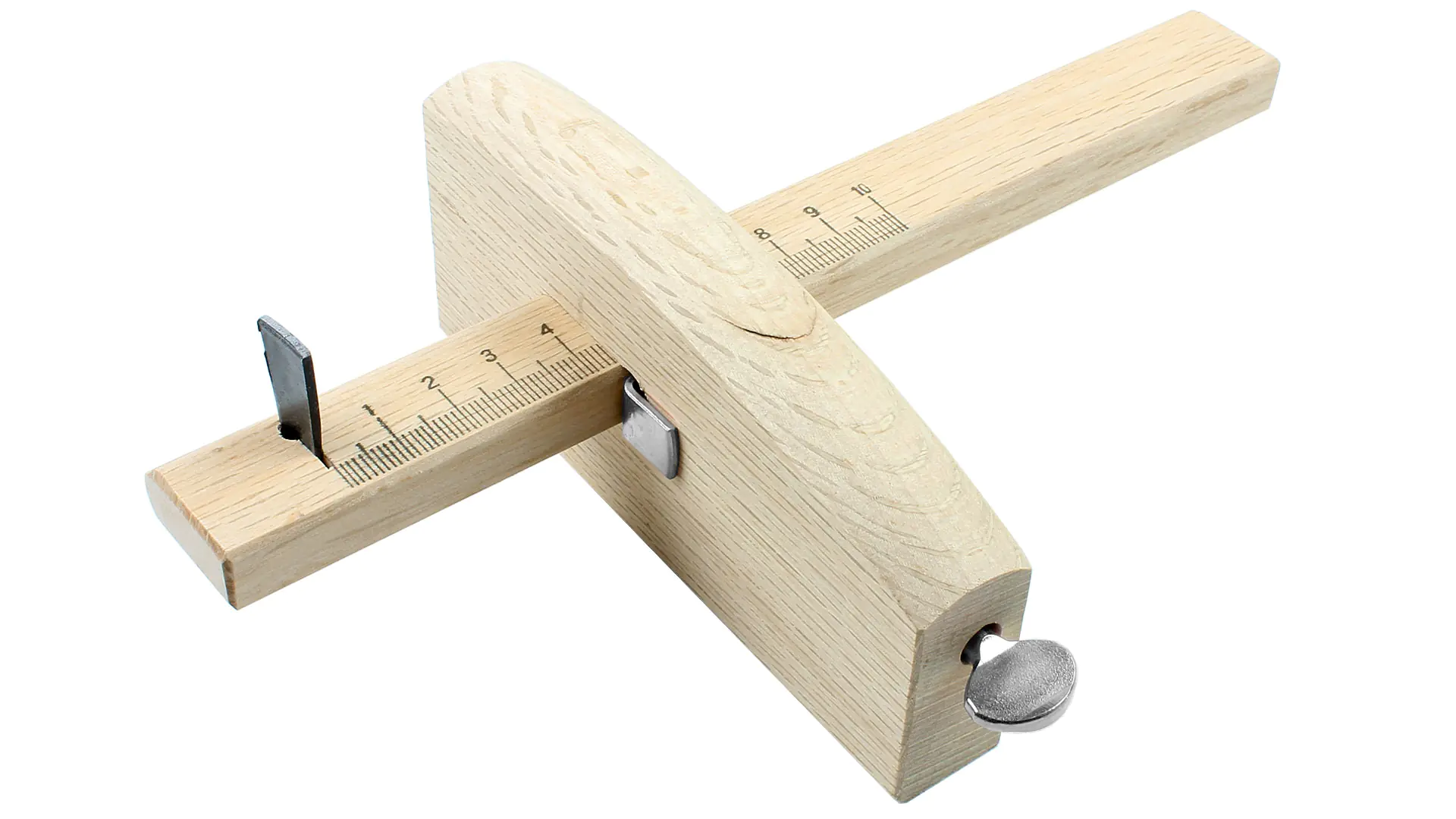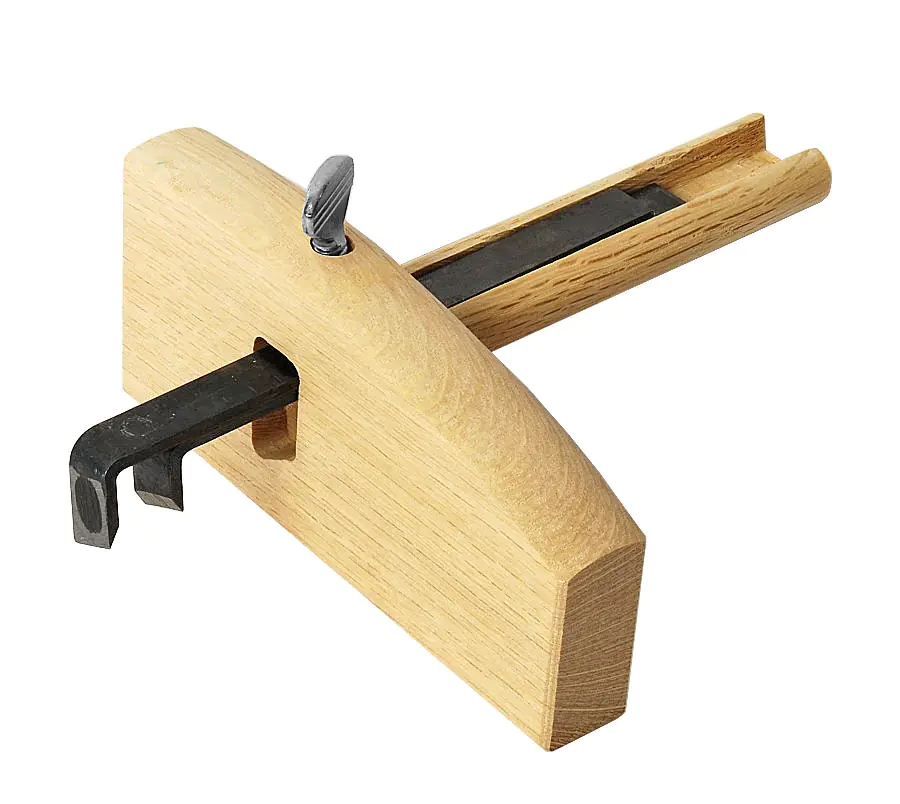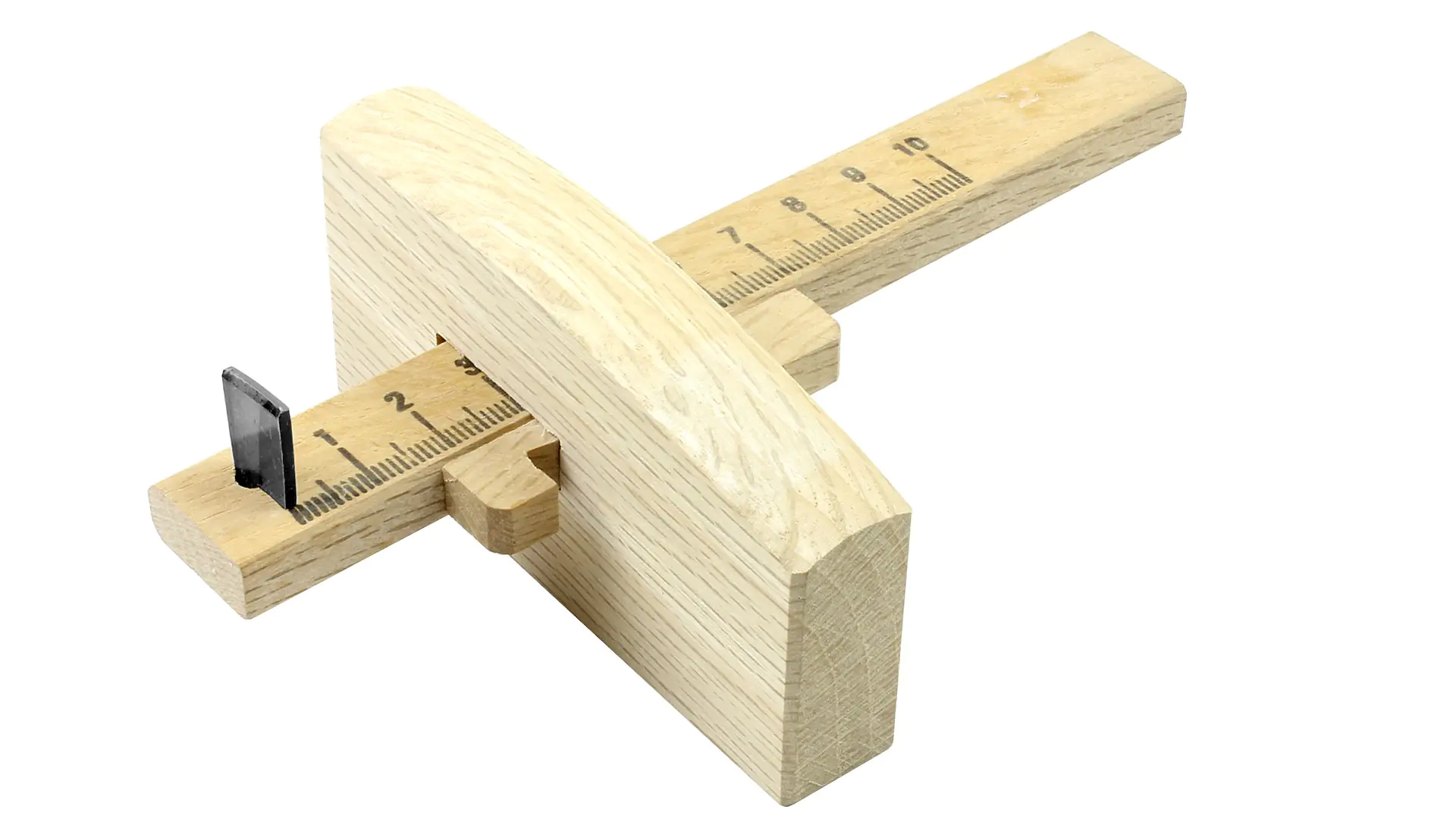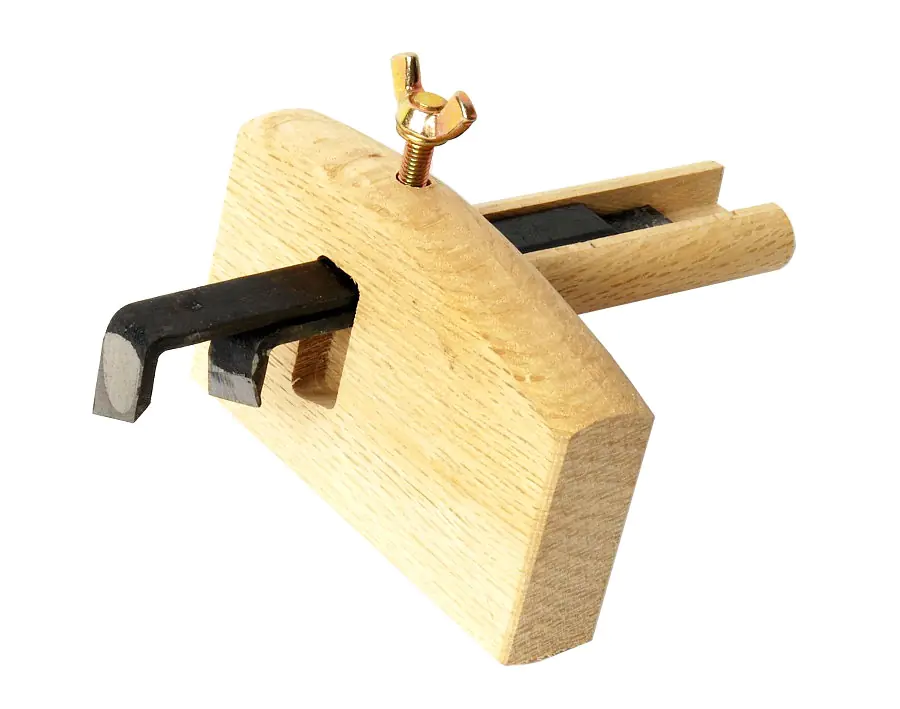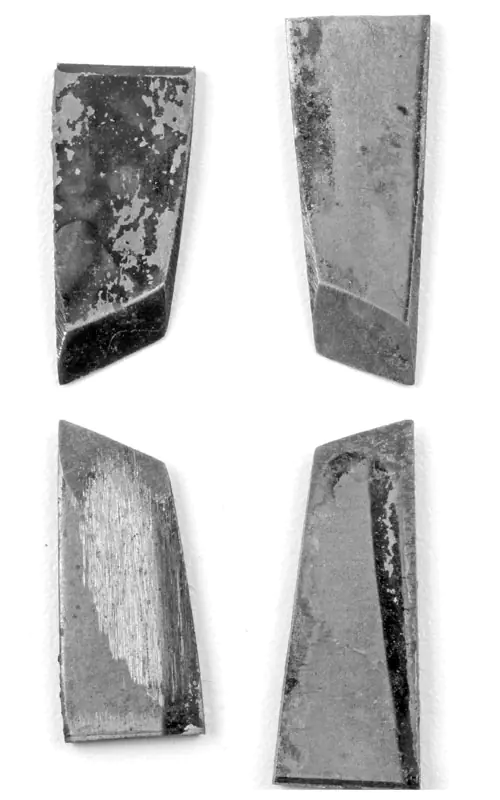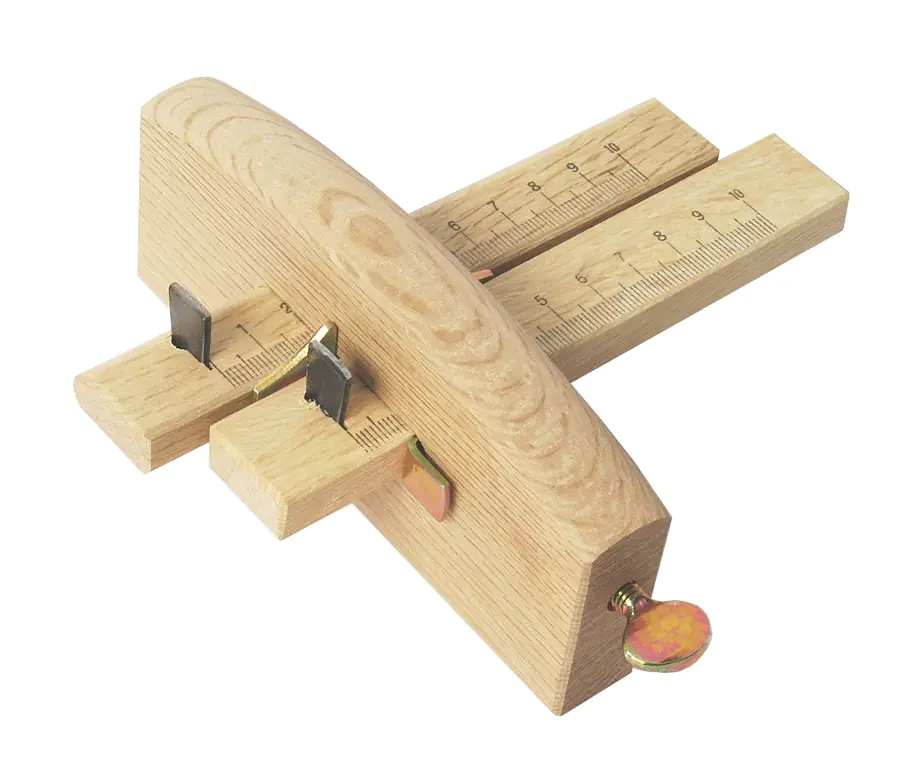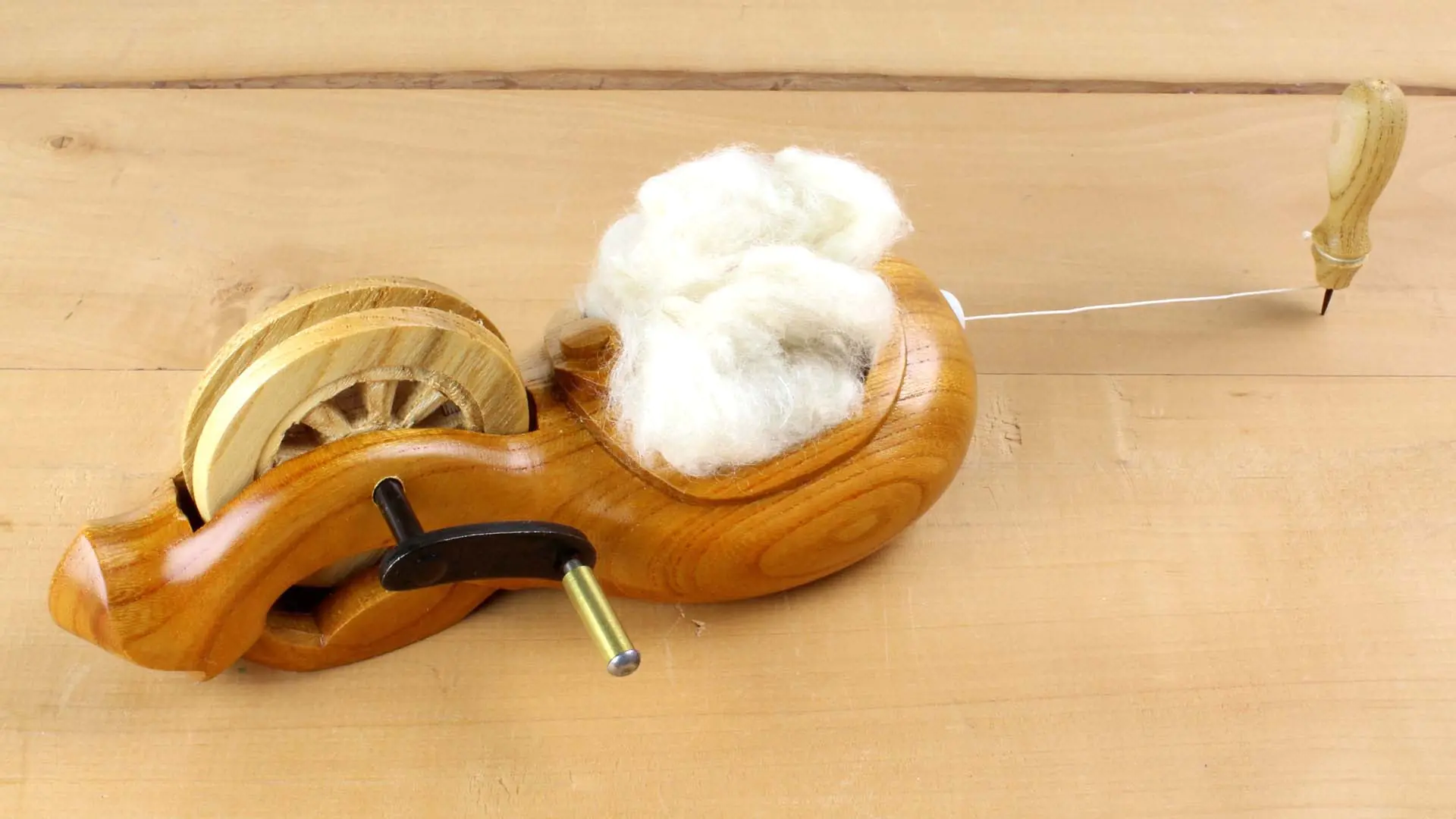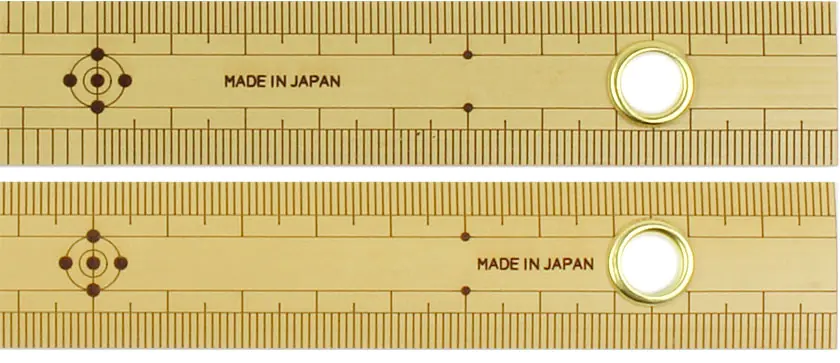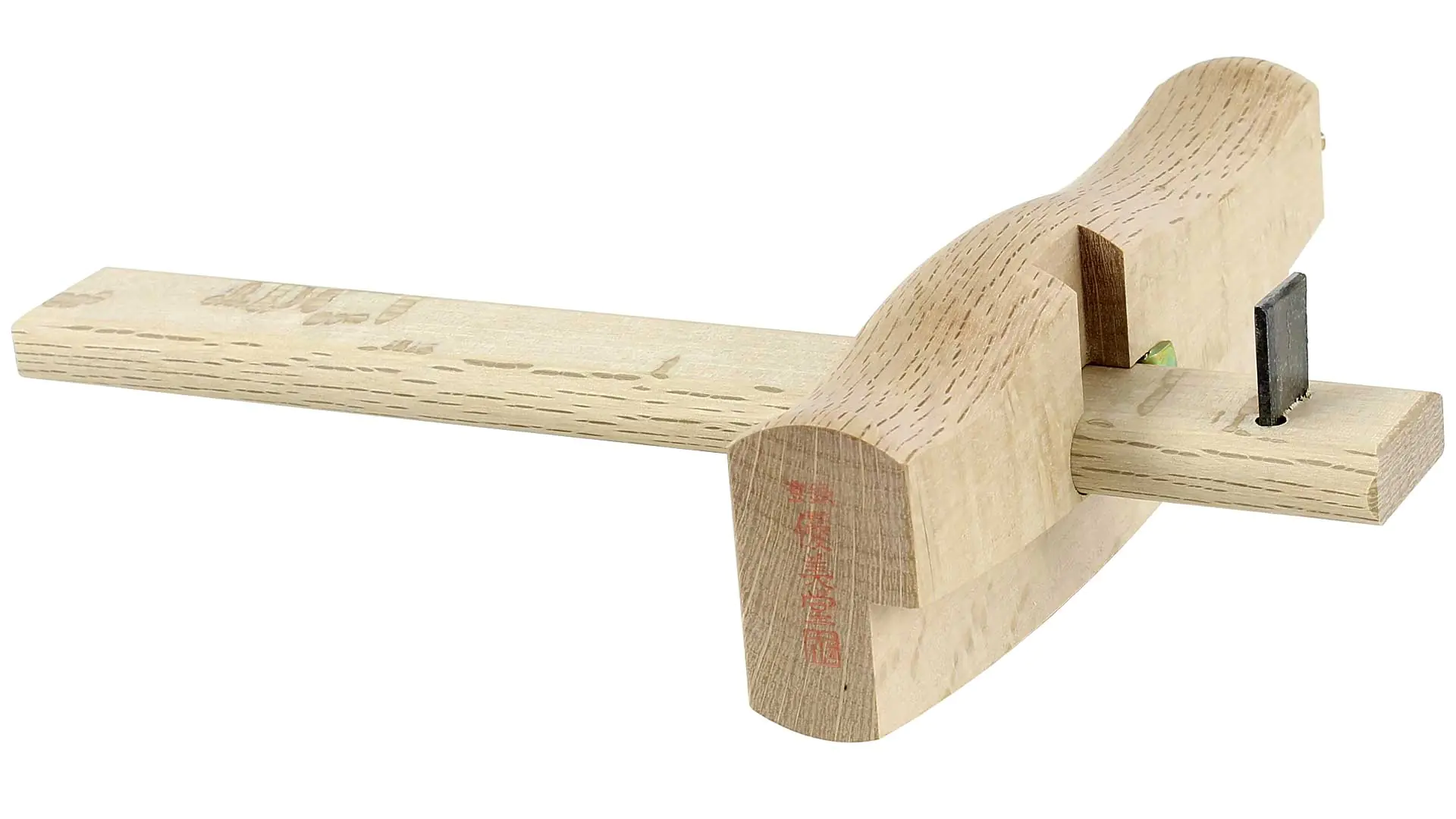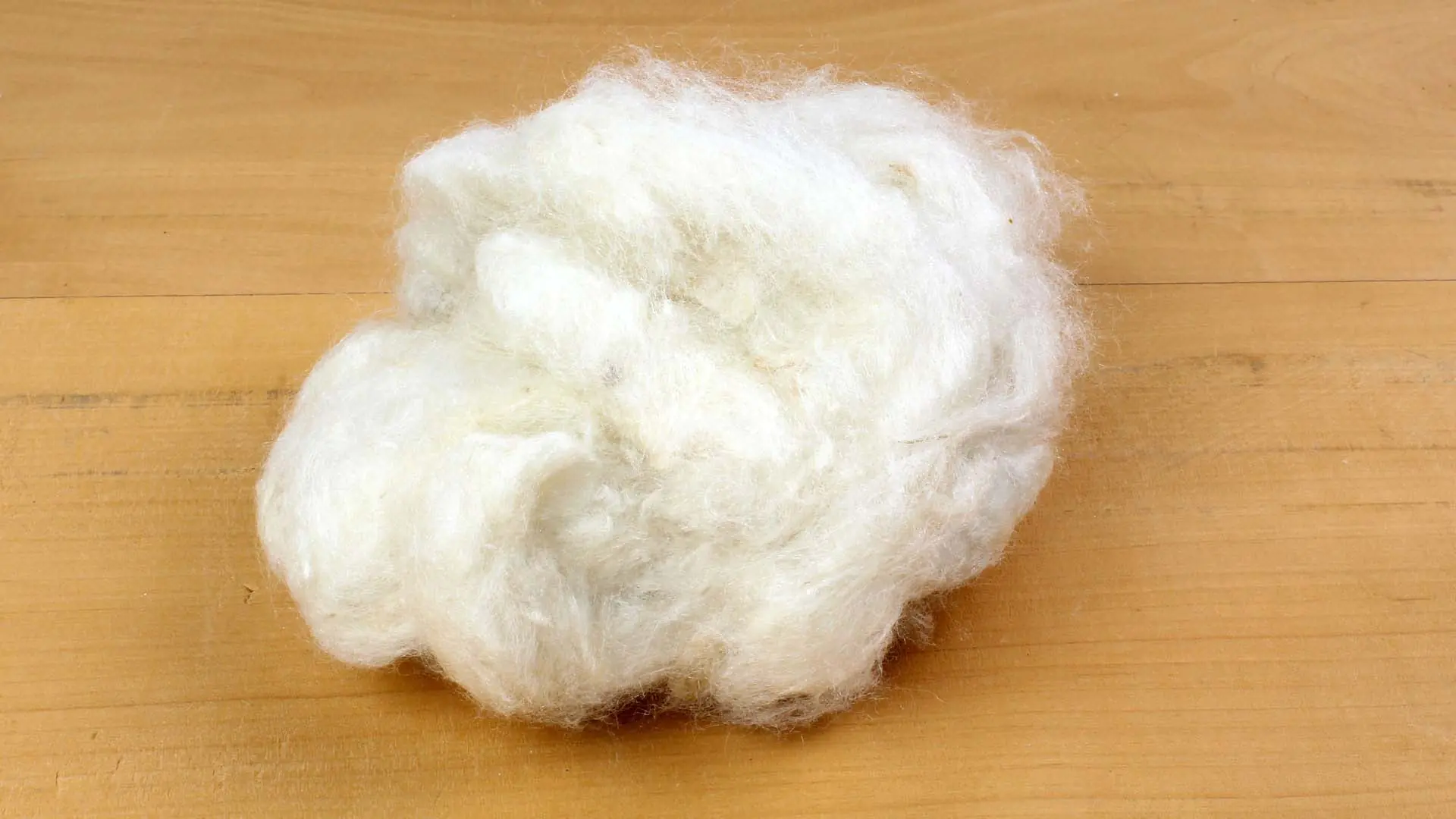-
Tools
- Japanese saws
- Western saws
- Chisel
-
Marking & Scribing
- Squares
- Bevel gauges
- Marking Gauges
- Tenon templates and tenon angles
- Pencils, Carpenter Pencils, Markers
- Rulers & Drawing Tools
- Compasses, external and internal calipers, rod compasses, thickness gauge
- Contour gauges, profile gauges, bar gauge heads
- Marking and Transfer Tools
-
Traditional Japanese Measuring & Marking Tools
- Planes
- Sculpting Tools
- Pliers
- Hammers & Mallets
- Axes, Hatchets & Adzes
- Crowbar, Pry Bar & Nail Puller
- Drawknife
- Assembly tools
- Woodturning Tools
- Clamps
- Fittings
- Safety knives, cutters
- Rasps
- Files
- Miscellaneous
- Promotion
- Drilling & Milling
- Machine Accessories
- Workshop
- Sharpening & Grinding
- Surfaces
- Measuring & Testing
- Household & Garden
Japanese marking gauges are equipped with knives instead of pins and have a relatively wide fence. These small knives have the advantage of marking cleanly even across the grain. Knives cut the fiber, while pins merely tear it. Like other Japanese woodworking tools, this one is also pulled.
The knife of the Keshiki is beveled on one side, with the bevel facing inward and the cutting edge facing away from the fence. In the Kama-Keshiki (mortise gauges) with two knives, the bevels face each other, whereas in the Suji-Keshiki with two wooden tongues, the bevels are parallel and not facing each other. If, in the delivered condition, the cutting edge does not protrude sufficiently from the slot, do not try to drive the knife in with forceful hammer blows, as this can split the wood of the tongue. Instead, enlarge the slot slightly with a needle file or a sharp knife. It is sufficient for the knife edge to protrude 1 – 5 mm, depending on personal preference. It should not be more than this, as it would make it difficult to hold the marking gauge precisely horizontal over the workpiece. Then, press the knife in and fix it with very light hammer taps!
The printed scale should only be seen as a guide, and the distance from the knife edge to the fence should always be checked with a ruler. Fine adjustments can be made on Keshiki with a wedge by carefully tapping the broad side of the hammer on the respective ends (end grain sides) of the tongue. The wedge can be fixed with strong thumb pressure or, if that is not sufficient, with a light hammer tap.
Available, delivery time: 1-3 businessdays within Germany
Available, delivery time: 1-3 businessdays within Germany
Available, delivery time: 1-3 businessdays within Germany
Available, delivery time: 1-3 businessdays within Germany
Available, delivery time: 1-3 businessdays within Germany
Available, delivery time: 1-3 businessdays within Germany
Available, delivery time: 1-3 businessdays within Germany
Available, delivery time: 1-3 businessdays within Germany
Available, delivery time: 1-3 businessdays within Germany
Available, delivery time: 1-3 businessdays within Germany

